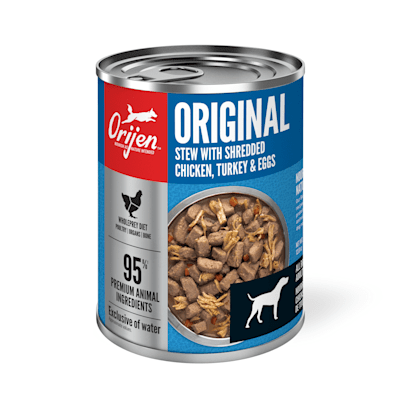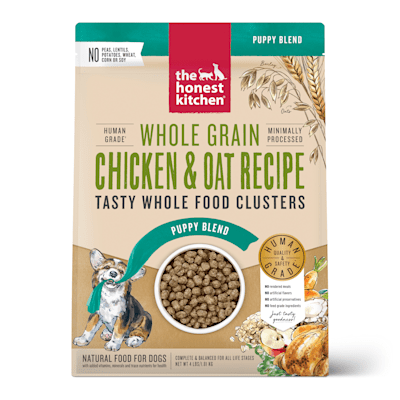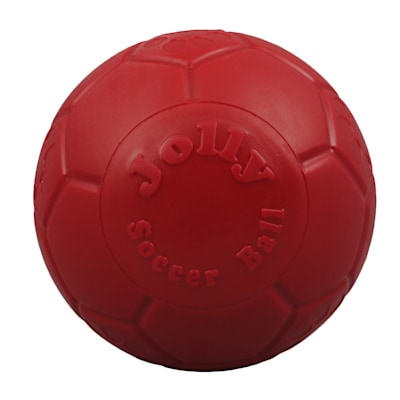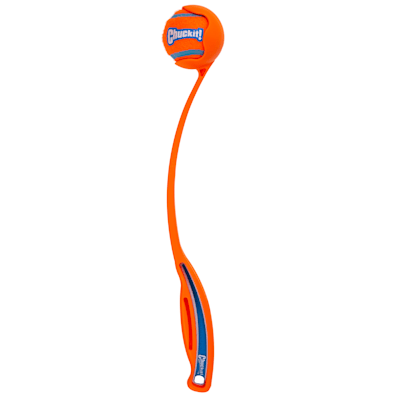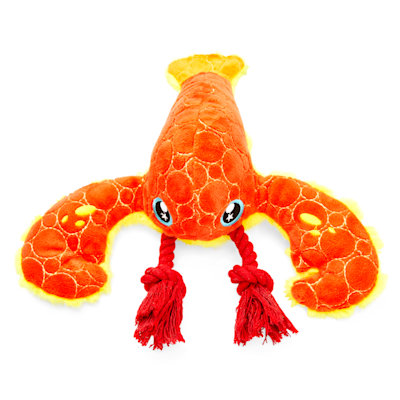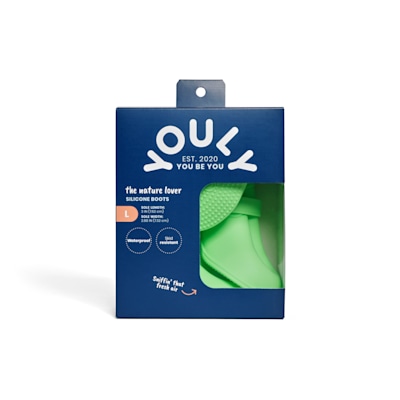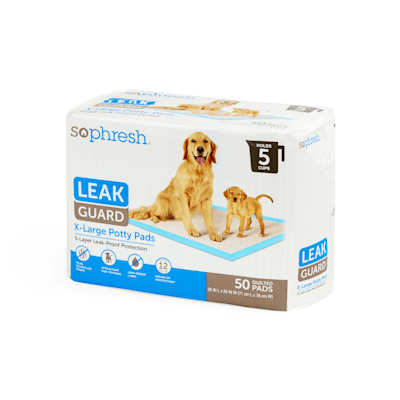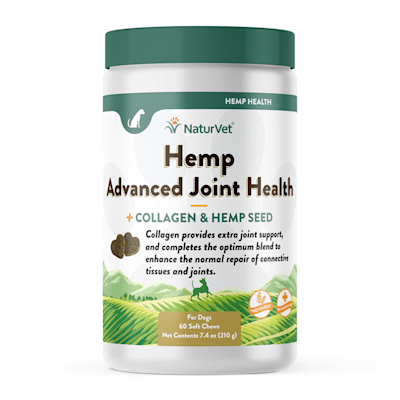
Siberian Husky
Siberian Huskies are famous for their historic role as a sled dog. Don’t be fooled by this canine’s wolf-like appearance or icy origins—Siberian Huskies are some of the friendliest and warmest dogs you’ll ever meet. Smart, loyal and more than a little mischievous, Huskies can make a wonderful addition to many families. Just make sure you’re willing to give them all the love and attention they crave, as well as plenty of outlets for their boundless energy.
Characteristics
Couch potatoes need not apply to adopt a Siberian Husky. Huskies need lots of attention and make wonderful jogging, hiking and adventure buddies. Their extra-friendly disposition means you won't be getting a very effective guard dog, but you will have a wonderful companion for you and your family.
Extra lovey-dovey Huskies want to be everyone's best friend. This makes them a great fit for families who can spend lots of time with them. Leave your Husky alone for too long, however, and you might find they've kept themselves entertained by chewing your shoes or serenading your neighbors with mournful howling.
Known for their beautiful brown and blue eyes, sometimes they have one of each, Huskies are generally clean and healthy. A medium- to large-sized dog, the average Husky weighs between 35 and 60 lbs. Female Huskies usually top out at 50 lbs. Huskies do best with lots of early socialization and a family who can provide a large yard. Just make sure to check your fence for holes before bringing home a Husky; they're famous escape artists.
Height
Measured from the floor to the top of their shoulders when standing or sitting
Male: 21-23.5"
Female: 20-22"
WEIGHT
Their average adult weight
Male: 45-60 lbs.
Female: 35-50 lbs.
LIFE EXPECTANCY
The average number of years they live
12-14 years
COLOR
Common fur colors
Black, white, tan, gray, red, sable, agouti
GROUP
Their AKC classification based on heritage, traits, form and function
Working
Size
LIVING SPACE
EXERCISE
PERSONALITY
BARKING
PROTECTION
BEHAVIOR WITH KIDS
TRAINING
SHEDDING
CLIMATE
Diet and nutrition
Like all dogs, Siberian Huskies need well-balanced and nutritious dog food to maintain good health. Make sure to feed your Husky food formulated for their life stage. This includes feeding puppy food to younger Husky pups and giving food formulated for older dogs to your senior Husky.
If you have a working Husky sled dog, increase their protein, fat and overall calories during their working months. In warmer weather or when they aren't working, cut back to match the change in their activity level.
One fascinating Siberian Husky fact is that these dogs can run for many miles on very little food. While this doesn't mean you should skip feeding your dog, it does help explain why Huskies are at risk of becoming overweight or obese. Remember, a full-grown Husky should generally weigh between 35 and 60 lbs. If your Husky starts tipping the scales, cut back on food and treats. Your dog's veterinarian can guide you on how much to feed your Husky.
Supplies
Give your Siberian Husky the best life with Petco's recommended supplies. From palatial dog houses to comfy dog beds and chew-tastic toys, these supplies will make your Husky howl with joy.
Husky Training
Majestic, athletic Siberian Huskies are easy to love. Are they easy to train? Well… maybe not easy, but you might be surprised how successful training your Siberian Husky can be. If you’re consistent in giving clear cues, rewarding desired behavior and redirecting unwanted actions, you’ll see the lifelong benefits training will bring. Whether or not you’re enrolling in Petco’s Positive Dog Training Program, you’ll want to reinforce your Siberian Husky’s training at home with the help of Petco’s dog training supplies and equipment for puppies and dogs.
Puppy Power
Since independence comes so naturally to Huskies, you’ll find the greatest chance of success by making training a regular part of your dog’s life as early as possible. You can start training your Siberian Husky puppy when they are as young as 8 weeks old. It’s better to schedule shorter, more frequent training sessions throughout the day than to frustrate your dog and yourself by trying to force long lessons that might not be as productive. Start with simple cues—“sit,” “stay” and “come” are skills Huskies can begin learning as puppies that will serve them well throughout life. You can add more cues that test your dog’s attention and patience as they progress.
Reward-based training
Huskies are known to be fun and friendly dogs. No matter how rambunctious your spirited snow dog might act when it’s training time, it’s important to achieve your desired outcome through positive reinforcement rather than by utilizing aversive techniques, which comes with many behavioral fallouts. Becoming frustrated during Siberian Husky puppy training is understandable, but keeping a cool head is crucial. Displays of anger, shame and physical force are not only cruel responses to your dog while they are in the learning process, but they’re also actually counterproductive. If your dog feels anxious, scared and unsafe, they’re unlikely to experience the trust and focus necessary to perform well during training sessions and retain trained behaviors in the long term. Instead, rely on positive reinforcement when your dog is successful and follows cues. Provide your Husky with praise, rubs and treats when they respond as desired. Siberian Husky training will be a far better experience for both you and your dog if your focus stays on rewarding desired behavior rather than punishing “disobedience.” Check out some of the best dog treats and chews to reward your Husky.
Redirection, not retribution
But what if your strong-willed Husky continues behaviors that they know are naughty?
Instead of punishment, use redirection and ensure the training environment is conducive for learning. If your Husky is distracted, take a moment to observe their body language and what in the environment might be causing it. Remember to reward even baby steps toward the targeted behavior.
An outlet for energy
A key part of Siberian Husky training is not just directing your dog toward the behavior you want from them but finding your dog’s strengths and learning to work with their unique personality. Remember to let your Husky shine in the skills at which they excel and tailor your training to their learning style.
Siberian Huskies are born to run, and few dogs can match a fast-moving Husky in endurance and elegance. Ample exercise is crucial for Siberian Huskies, and they’re more likely to engage in undesired behaviors when they feel bored or pent up. Activities that give your Husky an outlet for their energy and endurance include jogs, hikes, romps at the dog park and ball-chasing. Just don’t be surprised if your dog is more interested in running after balls than bringing them back to you. Huskies tend to get along well with other dogs, so pairing them with other, similarly energetic pups for playdates can be a good outlet for socialization.
Household boundaries
For the sake of a harmonious home, your playful, rambunctious Siberian Husky’s training should include clearly defined boundaries. Puppy training that includes consistent guidance on which areas are for sleeping, playing and pottying will help your Husky grow into an adult dog who knows what is expected of them. Establishing a designated potty spot, communicating which pieces of furniture are off limits and deciding whether you want to crate train your Husky are important choices you should make early on. Once you have made a decision, stick with it and follow through on rewards or redirection based on your dog’s behavior. Without consistency, your Husky has no clear guidance and no incentive to learn the household rules.
Suggested Siberian Husky training services
Training your Siberian Husky requires love, trust, patience and time. Even the most devoted and well-intentioned pet parents sometimes come up short on these resources. If you’ve spent more than a few nights online searching “Siberian Husky training near me,” it may be time to take advantage of Petco dog and puppy classes. Petco makes it easy to customize training to your schedule and budget and to your Siberian Husky's age and needs through individual and group classes that can be completed in store or online. Think of Petco’s training school as a go-to resource, not a last resort. Every pet parent can use a little extra help sometimes.
Common health problems
In general, the Siberian Husky is a relatively healthy breed. Like any purebred dog, however, certain hereditary conditions are more common among Huskies than mixed breed dogs. In particular, Siberian Huskies are known to be at a higher risk for several types of eye, skin and metabolic diseases. If you plan on obtaining your Husky from a breeder, make sure the breeder knows the disease history of your dog’s parents and grandparents. You’ll also want to bring your Husky to regular vet appointments for eye checkups and bloodwork. If you’re looking to get set up with a vet, check out Petco’s veterinary services.
-
Cataracts
Cataracts occur when proteins in the lens—the pupil of your dog’s eye—begin sticking together and blocking light from entering the eye. The most noticeable symptom is that your dog’s eyes begin to look cloudy. Cataracts often start small and grow, but they can also appear suddenly. Either way, they block your dog’s vision and can eventually cause glaucoma and blindness. The longer cataracts are left unchecked, the more they can cause inflammation, pressure buildup and even lens luxation, so early detection is key to managing this Husky health problem. Fortunately, dogs are very resilient and can live a normal life with small, immature cataracts, and when cataracts start to get large and affect vision, they are relatively easy to correct with surgery.
-
Progressive retinal atrophy
PRA is a degenerative disease that causes the photoreceptor cells of the retina to deteriorate over time. PRA occurs very slowly, so it is often not spotted until its symptoms have progressed to a visible level. The first sign pet parents can watch out for is night blindness. Your formerly healthy Husky may be hesitant to go out at night or may have trouble finding their way around in dark rooms. Changes in your pup’s sight can have numerous causes and always warrant a trip to your veterinarian. You may also notice your Husky has dilated pupils.
Unfortunately, there is no current recommended treatment for PRA. Over time, it can eventually lead to blindness. With the right support from their pet parents, many dogs with PRA can still live a full and happy life. Calming aids may be able to help pets learn to cope with PRA.
-
Glaucoma
Glaucoma occurs as a result of increased pressure within your dog’s eye due to poor or blocked drainage of eye fluid. It typically affects one eye first but can eventually affect the other eye. Though glaucoma is a very painful condition, pet parents may not notice it right away. Symptoms can include discharge from the eye, rubbing the eye, loss of appetite, lower desire to play, redness in the eye and even swelling of the eye. Your dog’s vet or a veterinary ophthalmologist can test the pressure in your dog’s eye to diagnose glaucoma. Treatment can include drugs like dorzolamide, painkillers and medicine to help increase eye drainage. In advanced cases of glaucoma, surgery may be necessary to prevent blindness or relieve pain.
-
Hip dysplasia
Even though medium Huskies are not considered especially large dogs, they can still experience hip dysplasia, which occurs when the hip joint does not form correctly. As a result, the hip joints are loose and can grind and rub against the socket instead of sliding smoothly, wearing them down over time. Symptoms of hip dysplasia include decreased activity, difficulty lying down and standing up, limping, stiffness and difficulty running or jumping. The best treatment for hip dysplasia is prevention. Your veterinarian can test your Husky puppy for risk factors of developing hip dysplasia and recommend surgical correction to prevent development of long-term arthritis and mobility issues.
While hip dysplasia is a hereditary Husky health issue, there are a few things you can do to help slow its onset and progression. Maintaining a proper weight is number one—ensure you feed them appropriate, nutritious dog food for their activity level and keep them active on soft surfaces to avoid obesity. Joint supplements like glucosamine may also help relieve pressure in joints and make them more supple. Surgery can also be an option for severe forms of this condition.
-
Hypothyroidism
If your dog’s thyroid gland doesn’t produce enough thyroid hormone, it can affect your pet’s metabolism. Hypothyroidism is most often caused by lymphocytic thyroiditis, where your Husky’s immune system attacks the thyroid gland. This is common in many breeds of dogs and not something that can be prevented. Some of the most common symptoms of hypothyroidism are weight gain while eating a normal diet, lack of energy, dull and dry coat, or they may shed excessively, they may seem tired and lethargic, and cold intolerance. A blood test by your dog’s vet can check for hypothyroidism. The typical treatment for hypothyroidism is the lifelong administration of thyroid medication like levothyroxine. The drug replaces the hormones usually made by the thyroid, helping your Husky regain internal balance, which has a high rate of success.
-
Laryngeal paralysis
Husky pet parents learn to appreciate—or at least accept—their pet’s chatty nature. Huskies love to talk and are especially known to howl when they feel lonely. Laryngeal paralysis tends to occur in older Huskies when the vocal cords begin to lose normal function. The vocal cords can ultimately become paralyzed, so you should bring your pet to the veterinarian right away if they stop chattering. In a worst-case scenario, laryngeal paralysis can cause dangerous breathing difficulties. Mild cases can be managed by changing your routine at home. Your vet may also prescribe medication to help.
Grooming your Siberian Husky
Huskies are well-known for their fastidious cleanliness, but that doesn’t mean they don’t require regular grooming. Their thick, double-layer coats go through a full shed twice a year, but also lose fur throughout the year so brushing is a must. Nail and teeth care are also important to maintaining your Husky’s health.
Make sure to stock up on all the dog grooming supplies you need before bringing your new Husky home. Begin grooming as early as possible in your pup’s life, so they get used to the routine. This includes brushing their coat, playing with their paws and touching their mouth and teeth when they are young.
-
Brushing
As snow dogs, Siberian Huskies have particularly thick and hardy double coats. It’s crucial to make brushing a regular part of your Husky care routine to keep your Husky’s fur in good shape and help prevent that dense undercoat from ending up all over your home. Siberian Husky grooming isn’t complicated, but it does require dedication—and the right dog shedding brushes.
Many pet parents find that Husky shedding can be more easily tamed with not one Husky brush but two—a slicker brush for the outer coat and a wide-toothed comb for the undercoat. Start with the comb and use it to brush and gently remove loose hairs from the undercoat, working against the direction of hair growth and outward, away from your Husky’s body. Take time on the undercoat. The more attention you give it, the less fur you’re likely to find on your furniture later. Once the undercoat has been thoroughly combed, use a slicker brush to smooth your dog’s glossy topcoat. If you run into snarls, pick them out gently with a comb. To prevent excessive shedding, it’s a good idea to brush your Siberian Husky once or twice a week.
-
Bathing
Huskies are particularly good at self-cleaning and don’t usually have a lot of doggy odors. This means you might only need to bathe your Siberian Husky every 8 weeks or so—unless they make friends with a mud puddle. When bathing your Husky, make sure you buy appropriate dog supplies. Do not use human shampoo and conditioner on a dog. Your pet’s skin pH is different than yours, so purchase shampoo and conditioner specially formulated for dogs. You’ll also want to stock up on towels and use a blow dryer on a low heat setting to dry off your pet.
-
Nail trimming
Siberian Huskies are great at keeping clean, but they can’t trim their nails. When you hear their nails clicking on the kitchen floor, that’s a good clue it’s time to cut their nails. If you prefer a grooming routine, consider clipping your Husky’s nails at least once per month. Any type of nail trimmer works, whether you prefer scissor clippers, guillotine clippers or a grinding tool that wears down the nail. Just make sure to avoid clipping the quick or the fleshy part at the end of your dog’s nail. It can be difficult to see the quick of Huskies with black nails. In this case, be conservative with your clipping. You may also want to keep a nail file handy to smooth any rough parts of the nail. Give your Husky plenty of praise and pats to help them associate nail care with positive experiences. A treat or two will also usually be appreciated. If your pet struggles with nail trimmings, seek out the help of your veterinarian or professional groomer.
-
Toothbrushes
All dogs are at risk of tooth and dental disease if they don’t receive proper oral tooth care. And Huskies are known to be at a higher risk of dental issues. That’s just an extra incentive to brush your dog’s teeth regularly. Untreated tartar can turn into gum disease and cause your dog significant discomfort. It could also cost your dog teeth in the future. In a perfect world, you would want to brush your dog’s teeth daily, just like you do your own. However, in the real world, brushing your dog’s canines at least several times a week is a good alternative. Invest in doggy toothpaste that appeals to your pup’s taste, and use a soft-bristled dog toothbrush or finger brush to help keep your Husky’s teeth healthy and plaque-free. Your dog should still have a daily dental routine, so on days you aren’t able to brush your dog’s teeth, you can provide dental treats and chews or use a water additive and dental wipes.
-
Dental treats
Dental treats are a great way to help remove tartar buildup from your Husky’s teeth and freshen their breath. However, dental treats should not be considered an alternative to brushing—you still need to brush your dog’s teeth. Dental treats are an added dental health measure. Petco offers a variety of dental treats that will appeal to your dog’s tastebuds while protecting their dental health.
-
Professional grooming
Some pet parents don’t have time to regularly groom their Husky, and that’s okay. If you’d rather spend your time snuggling or adventuring with your best friend, consider bringing your Husky to a professional groomer. Groomers are especially useful if your pup gets anxious during nail clippings, bathing or teeth-brushing.
Professional groomers also know breed-appropriate styles and can help your Husky look their best. Many Petco locations offer grooming services, including a six-point grooming package as well as à la carte services. Regular grooming is essential for your pet’s health. Making brushing, bathing, nail care and dental care a household routine can also help you bond with your Siberian Husky.
Where to adopt a Siberian Husky
If you are thinking about adopting a Husky, remember that Siberian Husky life expectancy can stretch to 14 years. This is a dog who could be in your life for a long time.
Browse Petco’s local pet adoption tool, Petco Love, or search for local Siberian Husky rescue associations in your city or in your state. You may be able to find a Siberian Husky at your local shelter. Many families love the idea of adopting a Husky, especially after watching inspiring movies like Balto. But they may not realize how much attention a Husky requires. For this reason, Huskies can be regularly seen at shelters. When seeking to bring home a Siberian Husky, you have multiple options, including working with a breeder, adopting from a rescue organization or adopting from your local animal shelter.
If you’re looking to find a purebred Siberian Husky from a breeder, do your homework when researching breeders and only work with those who are experienced and well-regarded. Responsible breeders will test their breeding stock for high-risk hereditary diseases to lower the chances that puppies inherit genetic conditions. They should also check their breeding stock for common Husky health issues, including eye disease and hip dysplasia. Don’t be afraid to ask a breeder about the medical history of a puppy’s parents and even their grandparents. A top-notch breeder should be more than happy to provide this information.
FAQs about Siberian Huskies
The best dog food for Huskies depends on factors that include their age, activity level and any health issues. For instance, the best kibble for puppies is unlikely to be suitable for an adult dog, so make sure your pup’s food is recommended for their developmental stage. While most Huskies tend to be active, those who are exceptionally energetic and get a lot of exercise—whether accompanying you on hikes and runs or engaging in strenuous dog park play sessions—usually need food that is especially dense in quality protein. And if your Husky needs a little extra help in the form of coat-conditioning fatty acids, digestion-aiding probiotics or immune-supporting antioxidants, you can select Husky food that contains beneficial supplements.
The Siberian Husky life span is typically 12–14 years. Generally, larger breeds have shorter life spans, while small breeds usually live longer. Some small breeds can even live up to 18 years, while giant breeds like Great Danes live only 10 years. The proper Siberian Husky weight is about 30–60 pounds, depending on whether they are a female or male, making the Husky a large (but not giant) breed. Compared to other dogs of this size—like Golden Retrievers and German Shepherds—Huskies can have a relatively long life span when given proper care.
A Siberian Husky’s weather-resistant double coat is great protection from snow, rain, cold, sun and even dirt—but it sure does shed a lot. The amount of shedding is simply a byproduct of such thick and protective fur. While their topcoats don’t shed much, Huskies have a whole lot of fluffy undercoat that can end up on your furniture, in your car and in tumbleweeds that scoot across your floor. However, proper Husky grooming can drastically reduce the amount of fluff floating around your home. The right Husky brush combination—such as a comb and a slicker brush—used at least once a week can help ensure that less fur ends up where it doesn’t belong.
Huskies can lose hair at any time, but Husky shedding is particularly voluminous two times a year, when Huskies lose their seasonal coat. In spring, they’ll shed their thicker winter coat for a lighter summer version, and in autumn, they shed their light coat for an insulating cold-weather variety. Each seasonal shed can take a few weeks to complete, so you may want to spend some extra time with the Husky brush during these periods.
Pet adoptions sometimes come with exciting surprises. For instance, will the puppy you adopted stay small as an adult dog, or will you eventually have a pet the size of a small horse on your hands? You may look at your young dog and wonder what they’ll look like when they’re fully grown.
If your puppy is a Siberian Husky, you can expect them to reach full adult height and weight between 12 and 18 months. This growth may seem to happen in stages. First, your puppy will grow rapidly in height, length and weight until about six months old. From 6 to 12 months, your Husky will continue to get taller and put on weight, though they may appear a little lean. From 12 to 18 months, they’ll fill out and reach their full adult height and weight. Providing nutritious food appropriate for their life stage is an important part of Husky care while your dog is growing.
Huskies are famous chatterboxes, and many pet parents enjoy all the unique vocalizations their dogs make. Huskies are known to jabber, grumble, bark, groan and howl. While no one is quite sure why Huskies are so expressive, the answer may lay in the fact that Huskies have traditionally been pack dogs. In large packs, successful Husky sled dogs may have developed a range of different vocalizations in order to communicate with their pack mates.
Additionally, Huskies are known to groan when they are relaxed and contented. So, if your Husky gives a deep groan during a belly rub, that’s a good sign—not an indication they are in pain.
Finally, one of the not-so-charming parts of a Husky’s vocabulary is their long, loud howl. This, too, may come from their history as pack dogs. Huskies are incredibly social and love being around their pet parents and other dogs. This makes them wonderful, snuggly members of the family but also means they may be more susceptible to separation anxiety. When left alone too long, a Husky may begin howling as a way of calling to their pack members.
On the larger end, a full-grown male Siberian Husky can tip the scales at 60 lbs. A dog of this size may be considered a large dog rather than a medium one. They can also grow up to 23.5 inches. If your Husky is heavier than 60 lbs. and looks a little rounder than necessary, it may be time to visit your vet to discuss whether your Husky needs to lose weight.
Siberian Huskies are working dogs originally bred as sled-pulling endurance runners. Though most pet parents no longer put their Husky dog to work on a dogsled team, Huskies still tend to have lean, athletic bodies and need quality nutrition to fuel their exercise. Ideally, Huskies should eat well-balanced food that contains a mix of high-quality protein, fat and carbohydrates. In general, Huskies need a little more protein and fewer carbohydrates in their food than some other dog breeds.
One of the unique traits of Siberian Huskies compared to some other dog breeds is their tendency only to eat when they’re actually hungry—often leaving kibble remaining in their bowl if they don’t need it. Don’t be alarmed if you find even the best dog food goes partially uneaten from time to time. This could also be a sign that your dog needs more exercise, so make sure they’re getting at least two hours of activity a day.
Here are some fun Husky facts. The ancestors of today’s Huskies were believed to have been first bred over 3,000 years ago by the semi-nomadic Chukchi tribe in northeastern Asia. The Chukchi used Huskies as sled dogs to haul light loads over large swaths of frozen territory. Due to their relative isolation, the Chukchi were able to continually enhance their sled teams into the nearly inexhaustible Siberian Huskies we know today.
Siberian Huskies started to gain the attention of the wider world in the early 1900s when they began winning sled races. The breed shot to fame in 1925 when a musher named Leonhard Seppala led a team of Huskies 658 miles to provide a life-saving serum to an isolated Alaskan town suffering from diphtheria. A statue of Balto, the lead dog on the final leg of the journey, stands to this day in Central Park in New York City.
Unless recommended by your veterinarian, Siberian Huskies should never be shaved, even in the heat of summer—which is why you never see a short-haired Husky. A Husky’s coat provides all kinds of protection and contributes to their wellbeing in crucial ways that aren’t always apparent to their pet parents. For example, their fur acts as a shield from the sun and insulates them from both heat and cold. A shaved Husky is highly susceptible to sunburn and skin irritation and is less able to regulate body temperature in all seasons of the year. What’s more, a Siberian Husky’s thick undercoat helps protect them from a host of environmental irritants—from twigs, burrs, sap and pollens to insects and parasites. It’s recommended to keep your dog’s coat in manageable shape through proper Siberian Husky grooming rather than shaving it off.
Positive reinforcement techniques backed by experts provide a great way to train your Siberian Husky. Consistency and patience will bring you the desired outcome of an attentive and responsive dog who enjoys the training process. However, keeping some tips in mind will help improve your training results:
Huskies can be quite a challenge when it comes to training—but that doesn’t mean you should give up. If you’re consistent, clear and patient when training your Siberian Husky, you will be rewarded with positive results. It’s important to set realistic expectations and not look for overnight improvements. Repetition and consistency will yield results, even if progress seems slow at first. If you don’t give up, neither will your Husky, and you’ll be encouraged to see your Siberian Husky training sessions pay off in the end.
Huskies have a natural tendency toward independence and long-distance running that makes off-leash training risky, especially for first-time pet parents. While it’s important for Siberian Huskies to get a chance to run, it’s best if this happens in a controlled environment such as a dog park, an enclosed backyard or a leashed jog with their pet parent.
It’s no surprise that Huskies tend to tug on their leash, given that pulling people forward is what they were bred to do. You can discourage tugging by stopping a walk and standing still when your Husky strains at the leash, then rewarding your dog when they ease up and walk beside you. Repetition of positive reinforcement will teach your Husky what you want from them and result in successful leash training. You may also benefit from getting your pup one of the best dog harnesses for them to wear on walks.
Common Husky health problems include hip dysplasia, degenerative eye conditions, hypothyroidism, uveodermatologic syndrome and follicular dysplasia. Many of these issues are hereditary, and you may be able to perform a genetic test to determine if your pup is prone to them. Proper nutrition is also essential to Husky health to help prevent excess weight gain and keep joints strong.
A Siberian Husky can be considered both a medium-sized and large-sized dog. Some sources consider dogs over 50 lbs. to be large breeds, while others push that number up to 60 lbs. The average Siberian Husky weight is between 35 and 60 lbs., with females typically being smaller than males.
- Siberian Husky Dog Food
- Royal Canin Dog Food For Siberian Husky
- Collars For Siberian Huskies
- Dog Clothes For Husky
- Dog Crates For Huskies
- Husky Puppy Essentials
- Best Bones For Huskies
- Dog Treats for Huskies
- Best Dog Toys For Huskies
- Border Collie Care
- Wet Dog Food For Huskies
- Husky Essentials
- Alaskan Malamute Dog Bed
- American Eskimo Dog Bed
- Australian Shepherd Dog Beds
- Alaskan Malamute Dog Food
- American Eskimo Dog Food
- Pomsky Puppy Food
- Alaskan Malamute Dog Treats
- Australian Shepherd Dog Bowls
- Sentry Dog Health & Wellness
- Dog Helios
- Sherpa Dog Outdoor & Travel Gear
- Kopeks Dog Outdoor & Travel Gear
- Dog Helios Dog Coats & Jackets
- Blue Buffalo Large Breed Dog Food
- Canidae Small Breed Dog Food
- Be One Breed
- Dog Helios Dog Harnesses
- Wilderdog
- Dog Helios Dog Walking Gear Sets
- Dog Helios Dog Sweaters & Hoodies
- Eukanuba Large Breed Dog Food
- Dog Helios Dog Outdoor & Travel Gear
- Blue Buffalo Small Breed Dog Food
- Pet Honesty Dog Health & Wellness
- K&H Dog Health & Wellness
- Dog Helios Dog Apparel Accessories
- Caldera Dog Health & Wellness
- Kopeks Outdoor Dog Gear


